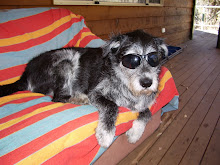All sorts of records were set at Brooklands including the Land Speed Record and the first ever Grand Prix was held here in August 1926. Motorcycle racing was also held here from 1908.
Read about Brooklands' aviation history here. One of Britain's first aerodromes was built in the middle of the racing track at Brooklands. In 1910 The British and Colonial Aircraft Company, later renamed The Bristol Aeroplane Company, took premises at Brooklands and offered flying lessons.
By August 1914, with the declaration of war on Germany, Brooklands and all its services including the race track were taken over by the war office and a Military Flying School was formed which employed instructors and aeroplanes from many of the existing schools. Over the next 20 years up to the outbreak of World War II, the Vickers factory at Brooklands produced a broad range of military and civil aircraft types. Brooklands Aerodrome was a regular venue for aviation events with air races, flying displays, dawn patrols and open days staged.
On August Bank Holiday Monday in 1939 the last ever motor race meeting had taken place on the famous track and later in the month the final Brooklands Flying Club event was held before all civil flying ceased. Everything was subordinated to the priorities of wartime aircraft production.
Of the 11,461 Wellingtons built by Vickers by 1945, 2,515 were built at Brooklands. The Wellington was Britain's most numerous and successful twin-engined bomber of World War II.
In the 1950s Brooklands produced the Vanguard, powered by four Rolls-Royce Tyne turbo-props, and in the 60s they entered the jet age with the Vickers VC10. This four-engined long-range passenger transport was the largest airliner ever produced in quantity in the UK and required the construction at Brooklands and Wisley of vast new aircraft assembly hangars. The VC10 was powered by Rolls-Royce Conway engines mounted at the rear beneath a distinctive T-shaped tail.
The VC10 pictured above is open for viewing at Brooklands. This aircraft was donated by the Sultan of Oman who had the interior designed for comfort! (As you would.)

 There were two double bedrooms, a huge bathroom and a luxurious lounge. Slightly better than business class!! The buckle on the bed's safety belt is gold, by the way, as were the taps in the bathroom.
There were two double bedrooms, a huge bathroom and a luxurious lounge. Slightly better than business class!! The buckle on the bed's safety belt is gold, by the way, as were the taps in the bathroom.
Then came Concorde. Although a number of factories in Britain and France were involved in its manufacture, together with many subcontractors, more of Concorde was actually designed and manufactured at Brooklands than at any other site.
The first meeting between BAC and Sud-Aviation in Britain was held in Sir George Edwards' office at Brooklands in July 1961. Concorde entered commercial service with British Airways and Air France on January the 21st 1976.
Sadly Concorde flies no more but places like Brooklands are acquiring their own Concorde for exhibiting.
Although a production aircraft, G-BBDG, or 'Delta Golf' as the aircraft is more affectionately known, never saw airline service but, along with Concorde F-WTSB (c/n 201), she did the bulk of the flying that allowed the final certification of Concorde for airline service. Having accumulated 1282 flying hours (of which 514 were supersonic), DG last flew on Christmas Eve 1981.

We sat and watched a video describing Concorde's journey.
Our guide had himself flown on Concorde and described the excitement of "taking off twice". First you experience the G force of initial take-off then again at 30,000feet when it climbs to 60,000feet and accelerates to twice the speed of sound.




No comments:
Post a Comment